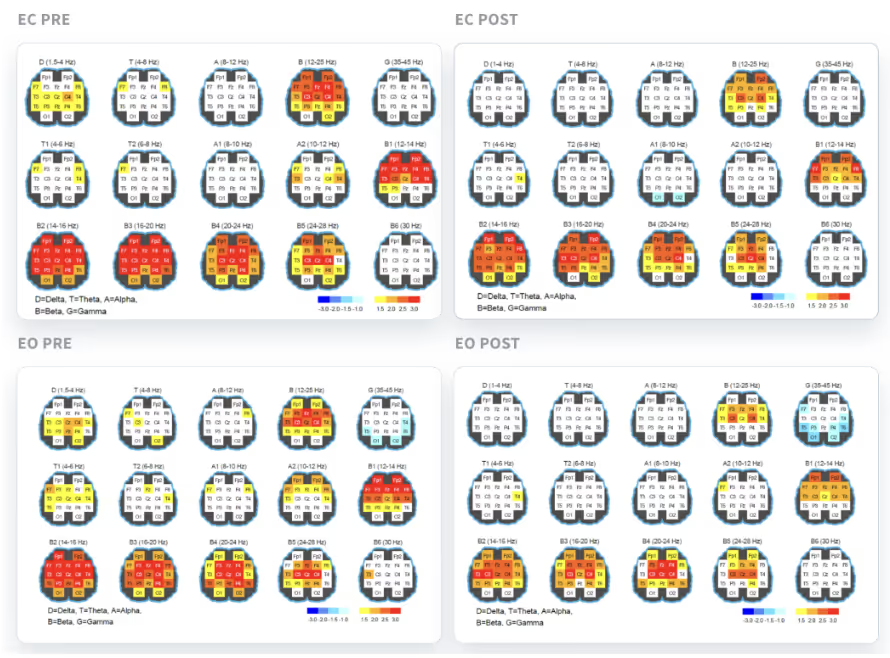Client X was a typical 34-year-old pharmaceutical sales rep living in Vancouver until her life took a dramatic turn after a car accident in 2019. What initially seemed like a mild concussion led to years of struggling with brain fog, anxiety, sensory overload, and fatigue. The vibrant, social person she once was now felt far away.
Regrettably, stories like these are more prevalent than we realize. In the United States, an estimated 1.7 to 3.8 million traumatic brain injuries occur annually (Agarwal, Thakkar & Than, 2024). However, what the statistics don't capture is the prolonged impact of these injuries and the challenging journey to recovery, which can last for many years.
Fortunately for Client X, she began treatment with the Neuradiant 1070 under the care of her psychologist, Dr. Andrea Araujo. Over the subsequent seven months, a positive transformation occurred.
This is her story of progress, resilience, and the potential of transcranial photobiomodulation (tPBM).
Life After mTBI: A Daily Struggle
Before the accident, Client X was outgoing and energetic, working in pharmaceutical sales, newly married and planning to have a child. After her life-altering accident, she began to struggle with the following:
- Sensitivity to light and sound
- Brain fog and memory issues
- Difficulty multitasking and planning
- Anxiety and disrupted sleep
- Pain in her neck, shoulders, and back
- Balance issues and social withdrawal
Despite her naturally resilient personality, the post-concussion symptoms made everyday life challenging.
The Approach: Using Light to Support Brain Function
In April 2024, Client X began using the Neuradiant 1070, a tPBM device that delivers near-infrared light (1070 nm wavelength) to the brain. This light supports cellular energy and regulation by stimulating mitochondrial function, reducing inflammation, and promoting neurogenesis in the brain..
A qEEG-based clinical protocol was used on the device twice daily on the device for seven months, with the addition of a third session in times of increased anxiety. To support this, Client X conducted biweekly counselling and employed self-regulation tools such as breathing exercises and PEMF support as needed.
A Measured Shift: What Changed
Throughout her journey, Client X tracked her experience with brain maps (qEEG), anxiety and depression questionnaires, and clinical feedback. Here’s what evolved:
Brain Activity

Mental Health & Cognition
- Notable reduction in OCD-like behaviors
- Greater clarity, confidence, and emotional stability
Sleep & Energy
- Deeper, more consistent sleep
- Stopped relying on caffeine
- Better energy resilience despite occasional late nights
Everyday Wins
- Comfortable using public transit again
- Traveled by plane with ease
- Found learning and focus easier than before
- Reconnected with gratitude and future goals
What the Research Says
tPBM works by stimulating cytochrome c oxidase, which boosts energy production within cells. Studies have shown that PBM can help:
- Reduce inflammation (Hamblin, 2017)
- Support neurogenesis (Tu et al., 2023)
- Encourage lymphatic drainage (Valverde et al., 2023)
These findings may explain the improvements seen in Client X.
Looking Ahead
While some challenges remain—like sensitivity to social environments or difficulty with complex mental tasks—Client X is excited to be functioning at a higher level, she is looking for the next challenge in self-improvement. She has been able to travel again after many years and her sleep has greatly improved. Her focus has shifted from coping with day-to-day to thinking about what's next in work, life, and purpose.
Final Thoughts
Every brain is different. But stories like this remind us of the remarkable ways the brain can adapt and change—especially when supported by thoughtful, evidence-informed tools like photobiomodulation.
Want to read more? Leave your email below and we'll send the full case study straight to your inbox.
References:
Agarwal, N., Thakkar , R., & Than, K. (2024, April 11). Sports-related Head Injury. American Association of Neurological Surgeons. https://www.aans.org/patients/conditions-treatments/sports-related-head-injury/
Hamblin, M. R. (2017). Mechanisms and applications of the anti-inflammatory effects of photobiomodulation. AIMS biophysics. https://pmc.ncbi.nlm.nih.gov/articles/PMC5523874/
Tu J; Huang Y ;Huang Y; Wu M; Wang R; (2023, September). [photobiomodulation promotes hippocampal neurogenesis and improves cognitive function and anti-inflammatory injury in rats with chronic cerebral hypoperfusion]. Sichuan da xue xue bao. Yi xue ban = Journal of Sichuan University. Medical science edition. https://pubmed.ncbi.nlm.nih.gov/37866954/
Valverde, A., Mitrofanis, J., Magistretti, P., Billeres, M., Moro, C., & Hamilton, C. (2023, March). Lights at night: Does photobiomodulation improve sleep? : Neural regeneration research. Lights at night: does photobiomodulation improve sleep? https://journals.lww.com/nrronline/fulltext/2023/03000/lights_at_night__does_photobiomodulation_improve.2.aspx









.png)





.png)